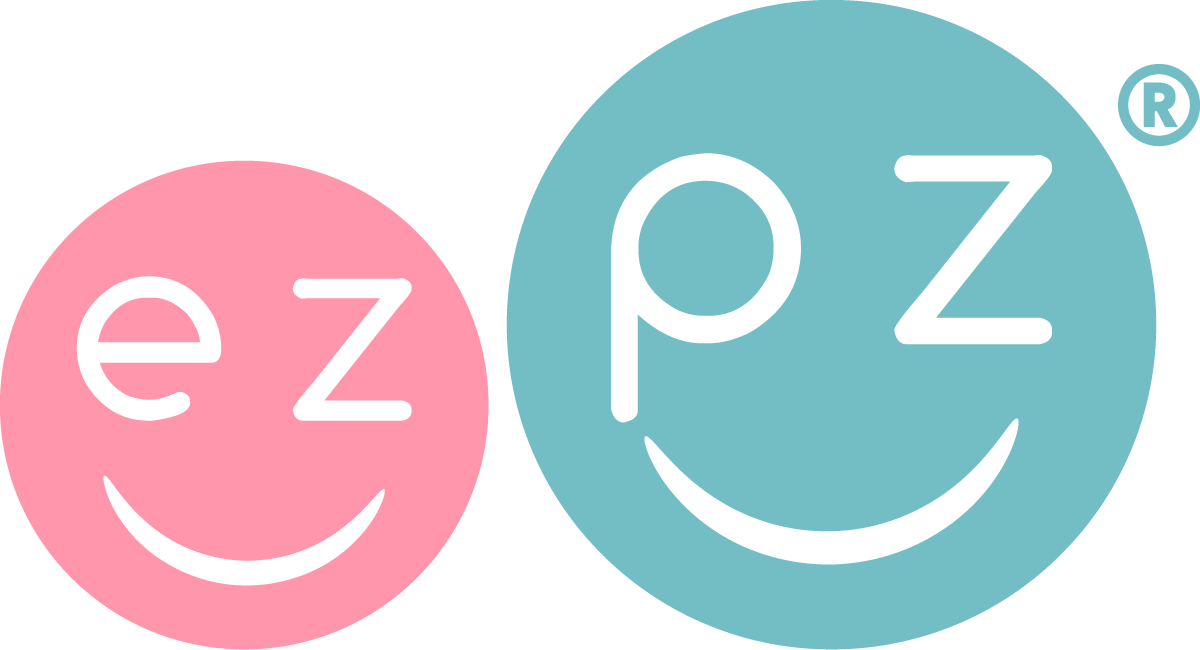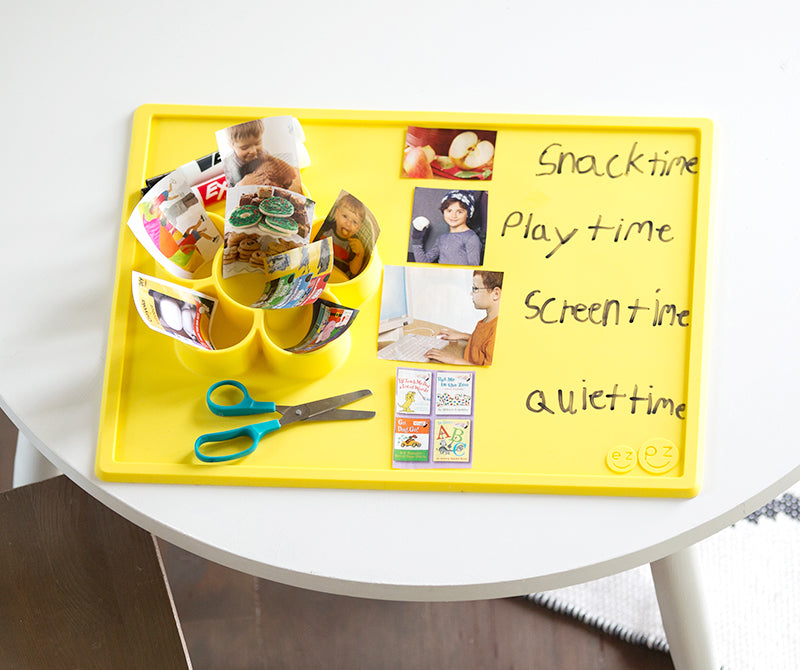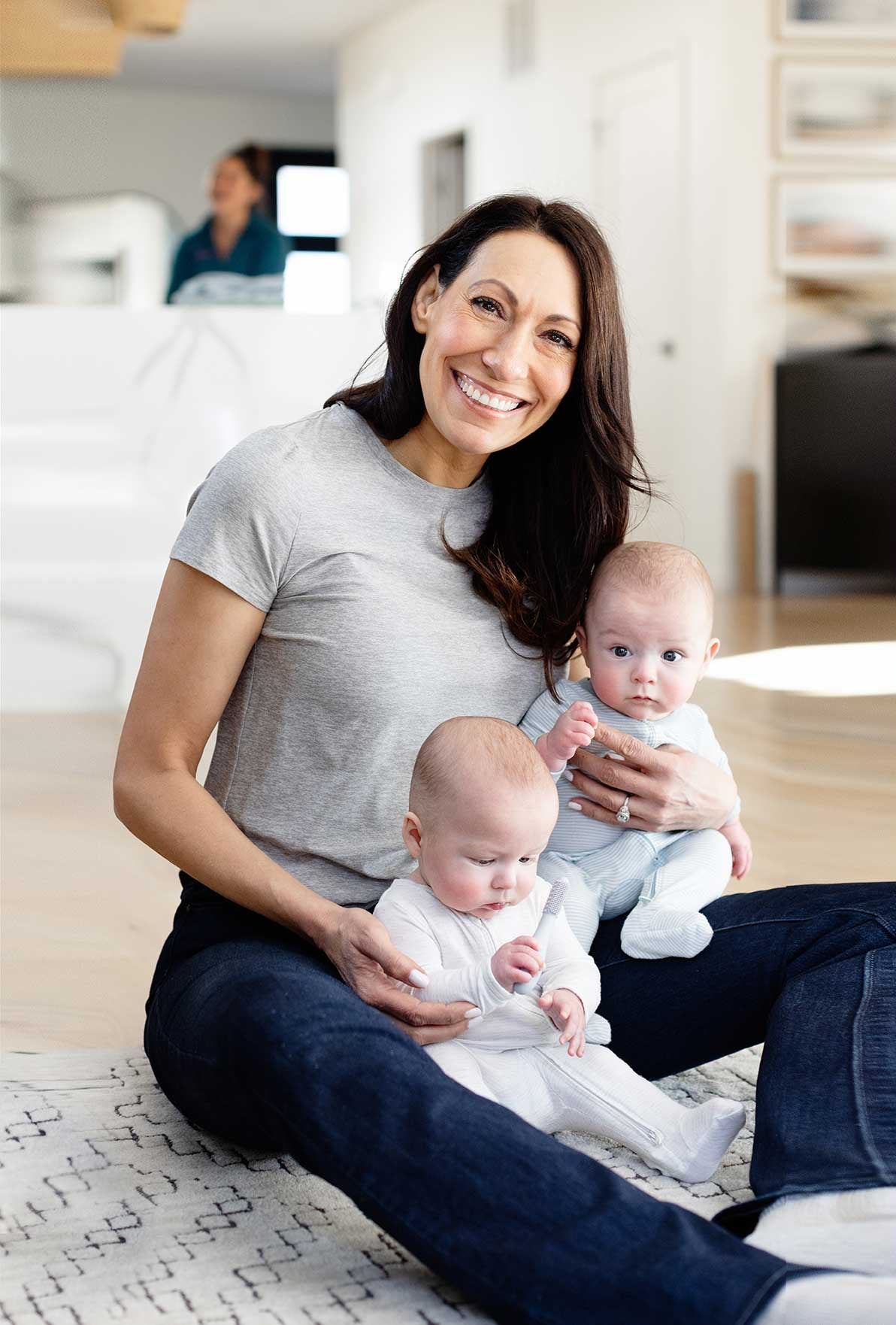Most teachers and therapists wouldn’t make it though the day without the help of a visual schedule, and I think more parents should use this valuable technique in-home! Here are some tips on using a visual schedule.
What is a visual schedule? A visual schedule is a technique to help a child understand what is happening next in their day. It is usually a list (in chronological order) of pictures/objects (for younger children) and pictures + words (for older children). These schedules help children transition from activity to activity since they understand what is next on their agenda.
When should you introduce it? I introduce visual schedules early in my therapy sessions with kids. To iterate, with a two-year-old, I simply point to the picture of the toy (on the schedule) then I grab that toy and we start playing with it. Surprisingly, young children can master the concept very quickly! With older kids, I talk about the schedule and have a discussion about all of the day’s events.
How do you make a visual schedule? Making a picture schedule can be a fun sensory activity for the whole family! I encourage parents to make it specific to their child and home-life using these easy steps:
- First, you need to decide on categories for your picture schedule. I like to organize it in six categories: mealtime, snack time, playtime, family time, screen time and quiet time (you can add or delete categories as necessary).
- Next, encourage your child to make their picture schedule with you. Help them cut out pictures from magazines and newspapers so they feel like they are part of the process.
- Then, have your child help you select a few pictures from each category to build your picture schedule. You can use a magnetic board, dry erase board or the Play Mat to organize the daily schedule. For older children, have your child write down the categories (see picture).
- Place the schedule in an area that is convenient for you to use throughout the day. Show it to your child and start using it as a prompt for what is next. I use the phrase “Let’s check the schedule” before I change the task or activity.
- Added bonus: Some parents add a section to the schedule to visually show some <much needed> alone time. For example, use pictures of an adult taking a bath, drinking coffee or reading a book. Parents report to me that they now have their own uninterrupted ‘quiet time’ because their child knows where they are and what they are doing. Big win for mom and dad!
Why should you use a visual schedule? We all know that having a list helps us organize our day and feel more in control. Well, some kids need that structure too! A visual schedule may decrease tantrums, improve communication and increase compliance to dreaded routines (like going to bed!). It can also promote learning and improve focus, which is very beneficial at mealtime. I asked a few parents that I work with to share the benefits they have seen since incorporating a visual schedule at home:
- “When my son was a toddler, a picture schedule kept him from being anxious. It was one of the most helpful tools for our family. What I liked most about it was when there were changes to our routine, there were no meltdowns, as long as those changes appeared on the schedule.”
- “First of all it, it keeps me organized. But, best of all, my kids aren’t constantly asking me what’s happening next or later. It definitely keeps them calmer and helps my little ones understand the sequencing of the day.”
- “This strategy has been a time saver in my family. My kids still whine about switching activities or doing errands with me, but there is less crying and more connection.”
Do you use a picture schedule in your home? What do you find most helpful about it? Let us know using the hashtags #ezpzfun #visualschedule.

































DIY Tissue Paper Holiday Crafts
Ice Activities for Summer